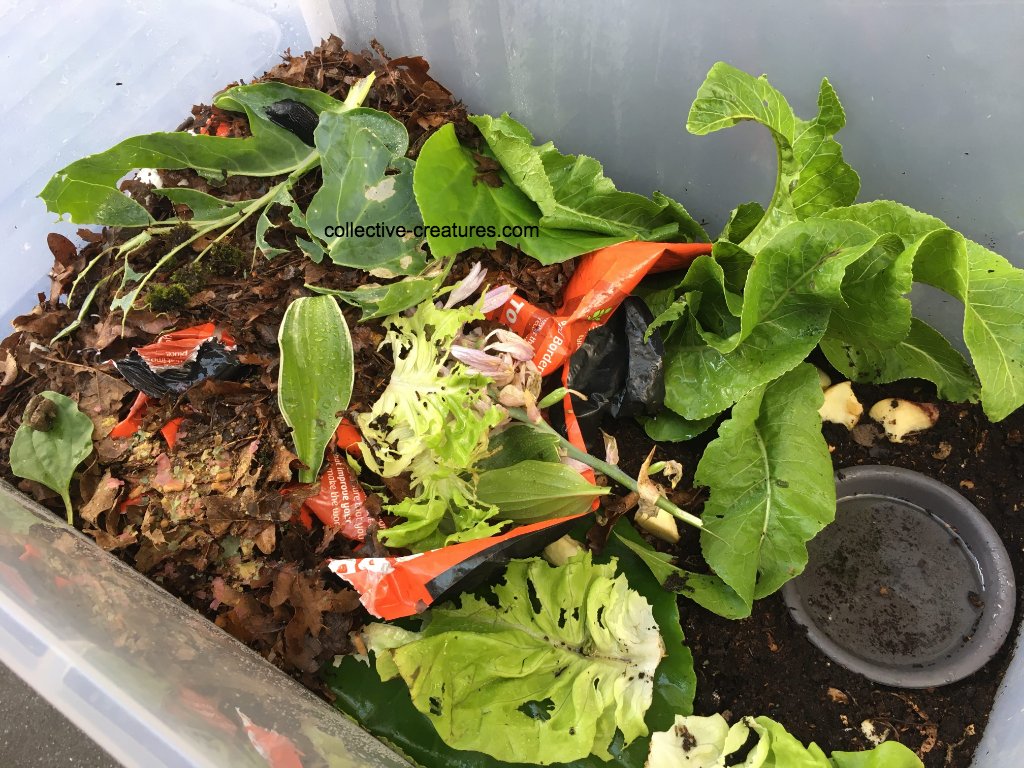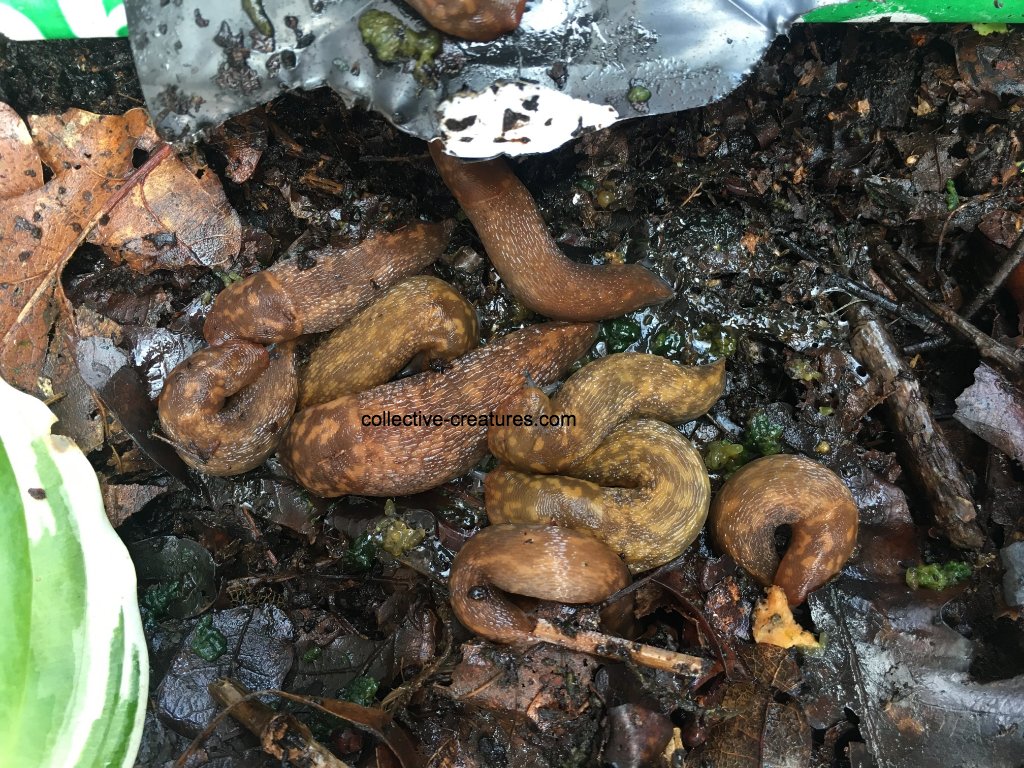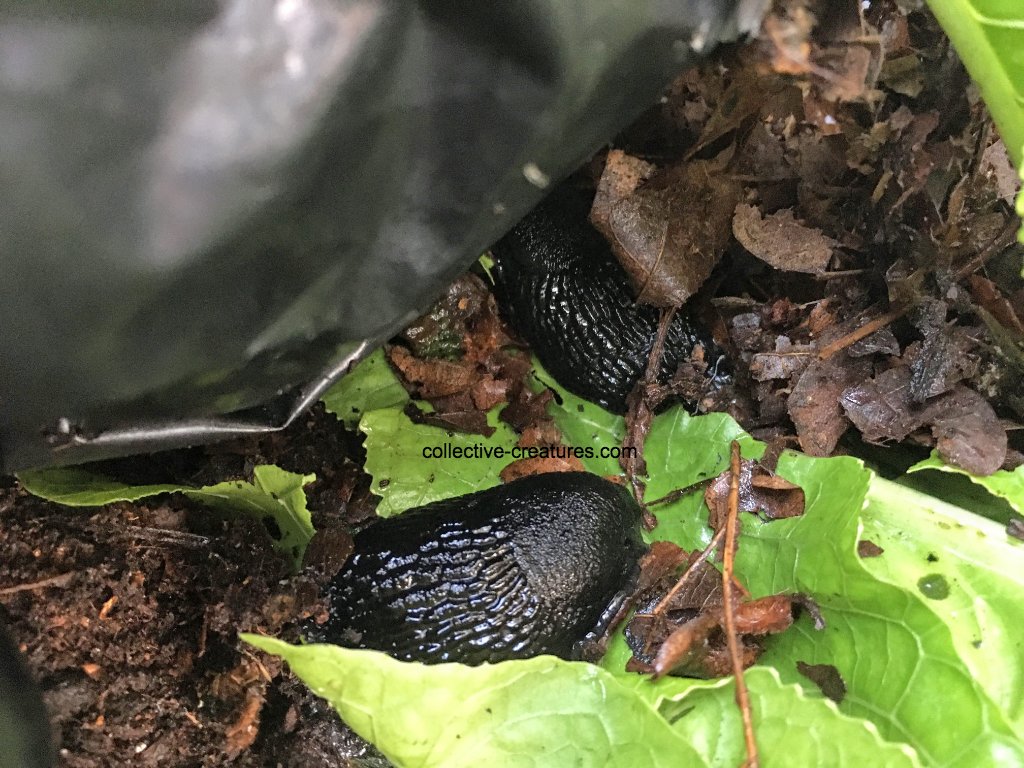Slug Care - a basic guide
Most people think that slugs are slimy & gross.
I think that they are beautiful, fascinating creatures & they do not all deserve the bad reputation they have got.
Not all slugs eat fresh living plants in the wild, most of them actually prefer either dead plant matter, bird poo or roadkill.
1 - Temperature...
Tropical slugs will need more heat than our own native species.
We keep our tropical slugs between 22 & 24*C and our native slugs outside in an unheated shed all year round.
Native slugs are active at most temperatures between 5*C & 20*C but seem to prefer feeding at temps around 16 - 18*C
2 - Substrate...
All of our slugs have an average of 2 - 3" soil depth depending on the length of the slug, we use damp woodland compost with a nice layer of leaf litter in one corner & moss in another. For our larger slugs we bury a rotten broken bit of branch under the leaves, they love to get inside it to stay cool on warmer days.
3 - Humidity...
We spray the leaf litter & moss very lightly once a week just to keep the leaves nicely damp but the top of the soil & plastic only once every 2 - 3 weeks. Slugs do NOT like soil that is soaking wet.
4 - Plastic...
I know it sounds odd using plastic in a 'natural habitat' but all of our slugs adore having a section of thick black plastic to sleep under, we use a bit of old plastic compost sack (they seem to prefer sleeping under the black, rather than the coloured side!)
5 - Food...
Most slugs, especially the large native ones need protein & will nibble at some raw chicken or mince once a week,
they will also like some sort of lichens, algae or fungi in their diet, again individual preferences for each species can vary but we have found that none of them can resist Birch Polymore (Piptoporus betulinus)
The tropical slugs are happy & healthy eating fruit & veg but we do give them soaked fish flakes once a week for protein.
As for the native slugs, I have tried to give some food preferences for them on our 'Native Slugs' page.
6 - Natural Hiding Places...
All slugs will appreciate some natural hiding places other than leaves & logs. We use Wild Horseradish, Hosta & Bergenia leaves as we have those in the garden but you can be creative & try other types. We keep the stems long & push them into the soil which keeps them fresh longer & when they start to die off, the slugs then enjoy eating them as they sometimes prefer manky leaves to fresh ones.
7 - Company...
Some slugs are very sociable and will group together as the photo of our Limacus sp. brown shows below.
We have found that Limacus, Deroceras & Tandonia species tend to live in groups but the Arion ater, Limax maximus & Cinereoniger slugs seem to keep to themselves unless they are breeding and will even attack each other to defend territory.
8 - Mucus...
Most slugs produce no more mucus than some snail species & are not any more difficult to clean out than snails are.
Ok, I will admit that the large Arion ater have very thick, sticky mucus that is almost glue-like if they are disturbed but if I really need to handle them I just wear gloves, any mucus they produce from quietly exploring is easily wiped off the tub or tank with kitchen roll.
9 - Lifecycle...
Most slugs find a mate and lay eggs once they reach near adult size, usually in the autumn / winter for our native species.
After egg laying they will usually die within a few weeks, maybe hanging on for another month or so - if you are going to keep slugs, either as pets or as feeders for omnivorous snails, it is best to keep the eggs to ensure you have a continuous slug supply.


